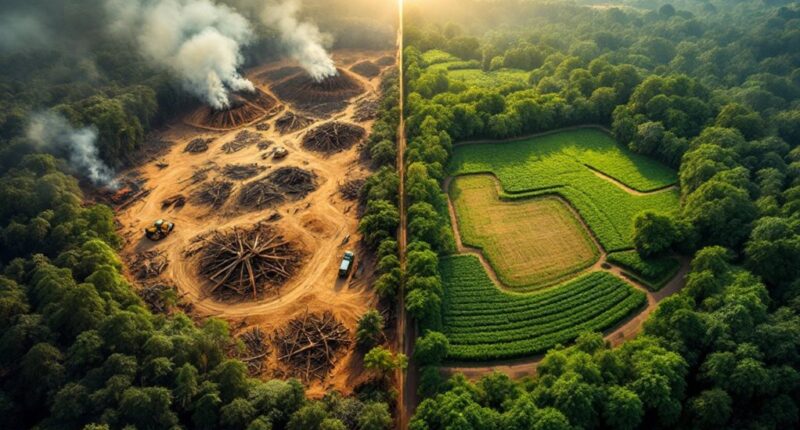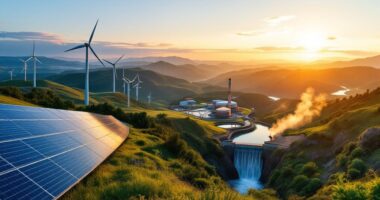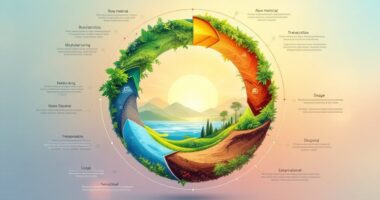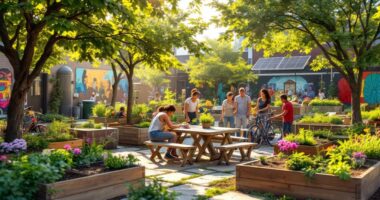Deforestation strips 10 million hectares of forest annually, primarily for agriculture and livestock production. This environmental crisis triggers biodiversity loss, greenhouse gas emissions, and disrupts water cycles. The global appetite for palm oil, soy, and beef fuels this destruction, often displacing indigenous communities. Solutions include sustainable forest management, protected areas, reforestation efforts, and community-based stewardship. The path to forest preservation lies at the intersection of conscious consumption, policy reform, and local empowerment.

Anyone who has witnessed a barren landscape where lush forest once stood understands the visceral impact of deforestation. Our planet has lost a staggering 420 million hectares of forest in just three decades—that’s roughly the size of the entire European Union vanishing into thin air (or more accurately, into furniture, beef, and palm oil). While forests still cover about 31% of Earth’s land, they’re disappearing at an alarming rate of 10 million hectares annually, with tropical regions bearing the brunt of this arboreal exodus.
Agriculture plays the villain in this environmental drama, with farmers clearing forests faster than teenagers clear refrigerators. Soybean fields spread across the Amazon like an invasive green blanket, while palm oil plantations transform Southeast Asian rainforests into orderly rows of productivity. Cattle ranching in Latin America and cocoa farming in West Africa further fuel this global chainsaw massacre. It’s as if we’re trading our ecological inheritance for a supersized global buffet. The European Union’s consumption habits contribute significantly to this problem, accounting for 10% of global deforestation through its imports of products like palm oil and soy.
The consequences extend beyond just losing pretty scenery for postcards. Deforestation creates a biological domino effect: habitats crumble, biodiversity plummets, and greenhouse gases surge. The soil, once held together by tree roots, erodes faster than public confidence during a political scandal. Water cycles go haywire, and natural disasters get an unwelcome power boost. The disruption of natural water systems from forest loss leads to altered rainfall patterns that impact agricultural regions far beyond the deforested areas. Meanwhile, indigenous communities—who’ve managed these forests sustainably for millennia—find themselves displaced from ancestral lands.
Fortunately, solutions exist beyond simply hugging trees (though that’s never a bad start). Sustainable forest management—treating forests like renewable resources rather than one-time extraction opportunities—shows promise. Protected areas, when actually protected rather than just labeled on maps, preserve critical ecosystems. Reforestation efforts are transforming degraded lands into budding forests. Supply chain initiatives guarantee that your morning coffee didn’t cost a chunk of rainforest. Perhaps most promising, community-based management approaches recognize that local populations have always been the true guardians of the forest—they just need the authority and resources to continue their ancient stewardship.
Frequently Asked Questions
How Quickly Can a Reforested Area Restore Biodiversity?
Reforested areas recover biodiversity at varying rates. Pioneer species establish within 1-5 years, while soil microbes bounce back to 90% diversity in 10-20 years.
Bird populations reach 80% of old-growth levels after 50 years. Full recovery typically takes over a century. Proximity to intact forests, diverse tree plantings, and presence of seed dispersers accelerate this timeline.
Effective management strategies include planting native species mixes and creating wildlife corridors to enhance restoration success.
Which Countries Have Successfully Reversed Their Deforestation Rates?
Several countries have successfully reversed deforestation trends in recent years. Indonesia and Malaysia have reduced their rates by 64% and 57% respectively between 2015-2017 and 2020-2022, with Indonesia achieving its lowest primary forest loss since 2002.
Brazil recently saw a 36% decrease in primary forest loss from 2022 to 2023. Most remarkably, Costa Rica became the first tropical country to completely reverse deforestation, increasing forest cover from 21% to 52% between 1987 and 2005.
What Role Do Indigenous Communities Play in Forest Conservation?
Indigenous communities serve as invaluable guardians of forests worldwide, employing traditional ecological knowledge developed over centuries. Their land management practices—including planned fires, sustainable harvesting, and holistic resource stewardship—have proven remarkably effective at preserving biodiversity and enhancing forest resilience.
Research confirms that forests under indigenous management experience markedly fewer instances of deforestation and higher carbon sequestration rates. When given legal recognition of land rights, these communities achieve conservation outcomes that often surpass conventional protected areas while maintaining cultural connections to their ancestral territories.
How Does Deforestation Impact Local Weather Patterns?
Deforestation considerably alters local weather patterns in several ways. It increases local temperatures by up to 4.5°C, particularly in tropical regions during daylight hours.
Rainfall patterns shift dramatically, with some areas experiencing up to 30% reduction in annual precipitation and delayed rainy seasons. The removal of trees reduces evapotranspiration, creating drier air conditions and disrupting cloud formation. Additionally, deforested regions become more vulnerable to extreme weather events including severe droughts, floods, and unpredictable storms.
Are Lab-Grown Wood Alternatives Economically Viable Solutions?
Lab-grown wood alternatives currently face significant economic barriers. Researchers must overcome high production costs, energy demands, and scaling challenges before market viability emerges. While promising in theory—offering custom shapes without processing waste—the technology remains in early stages.
Infrastructure investments and efficiency improvements would be necessary to compete with traditional timber. Additionally, potential impacts on timber-dependent communities raise important socioeconomic questions that require careful consideration before widespread adoption becomes feasible.









